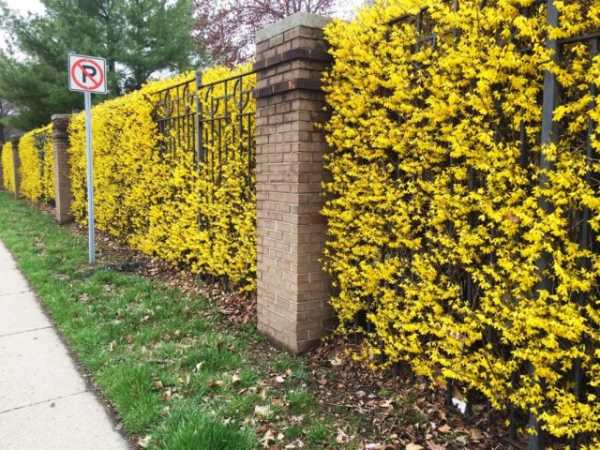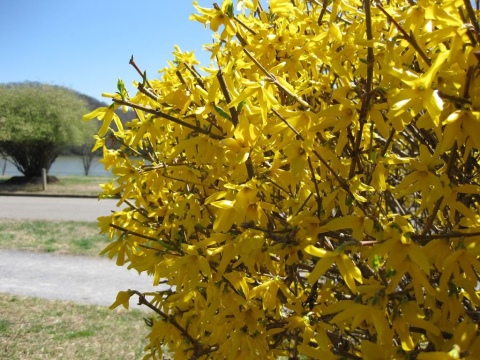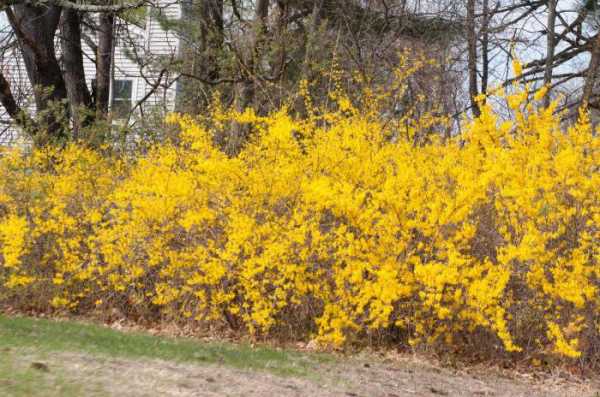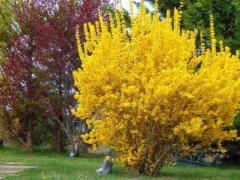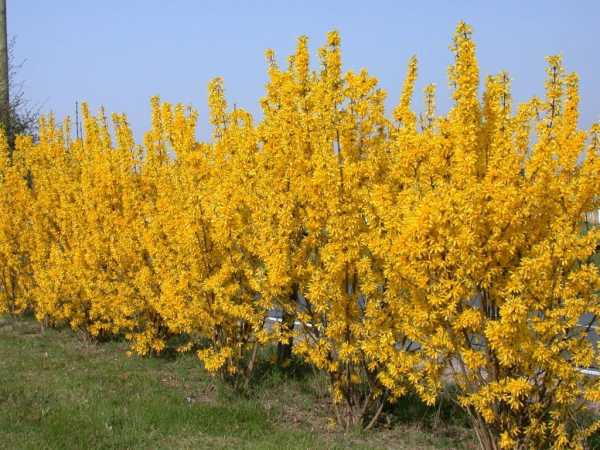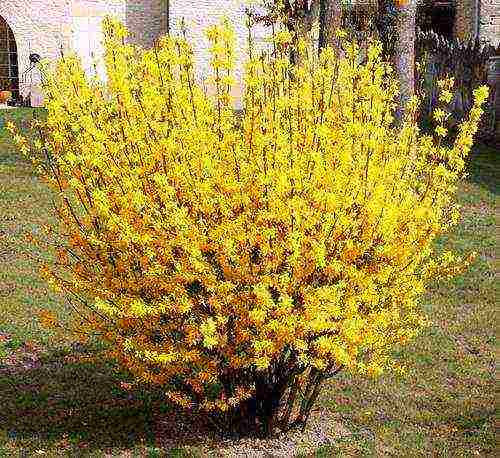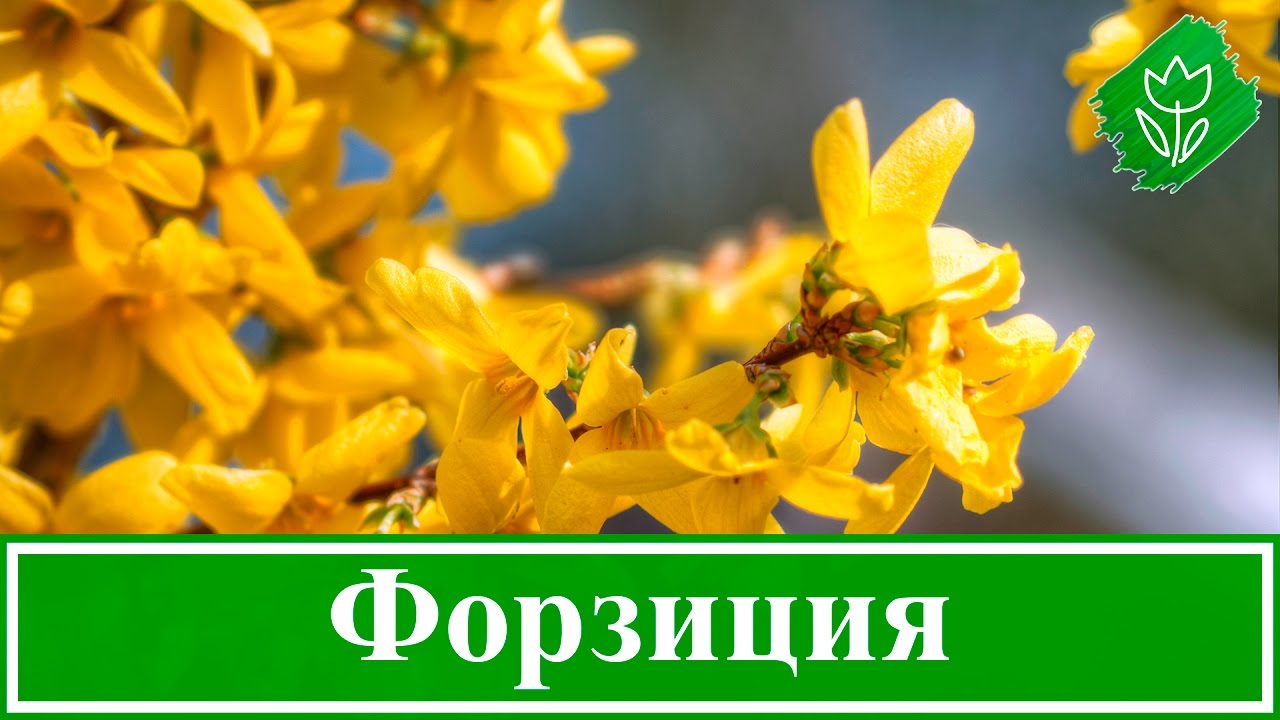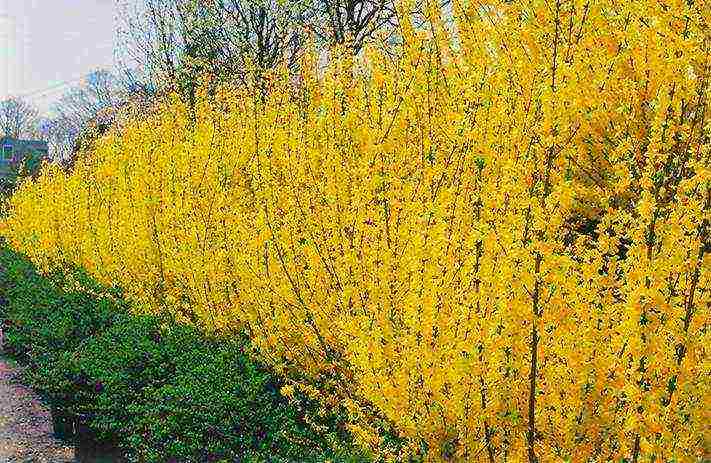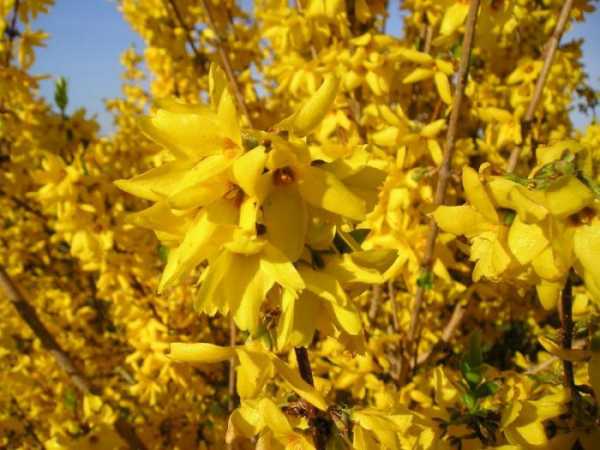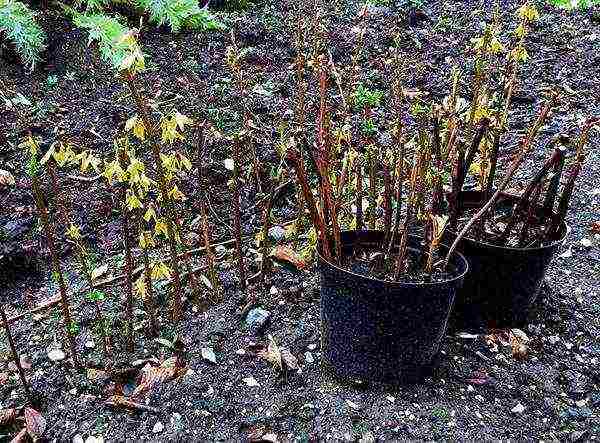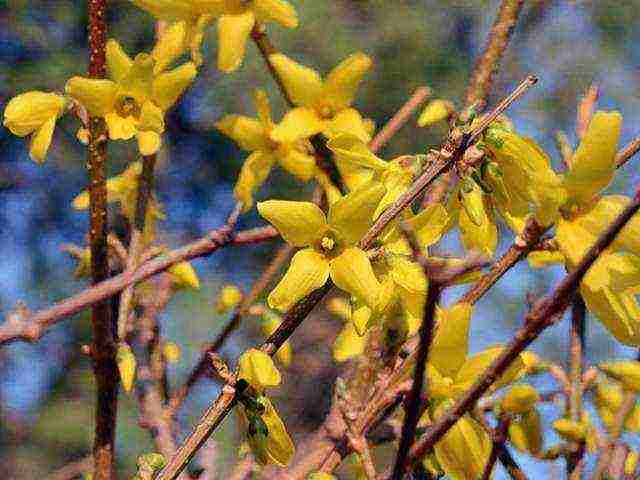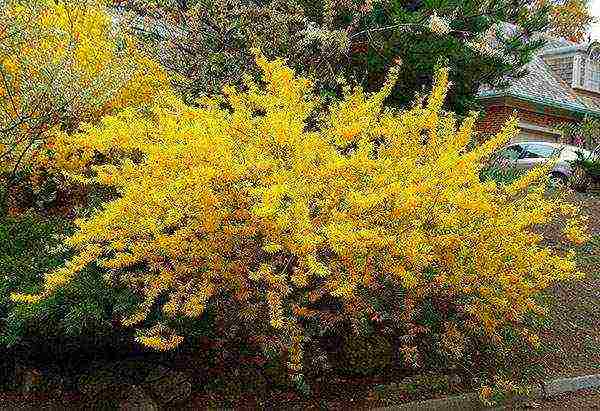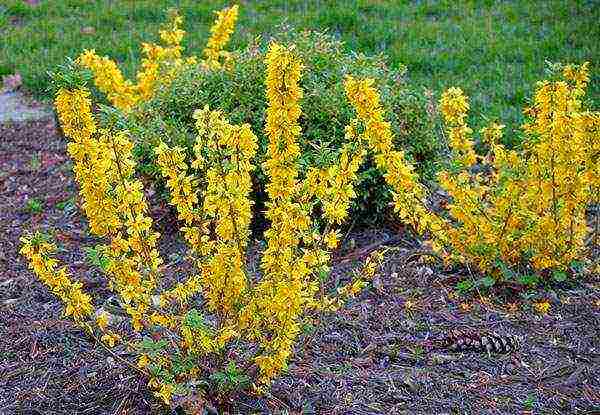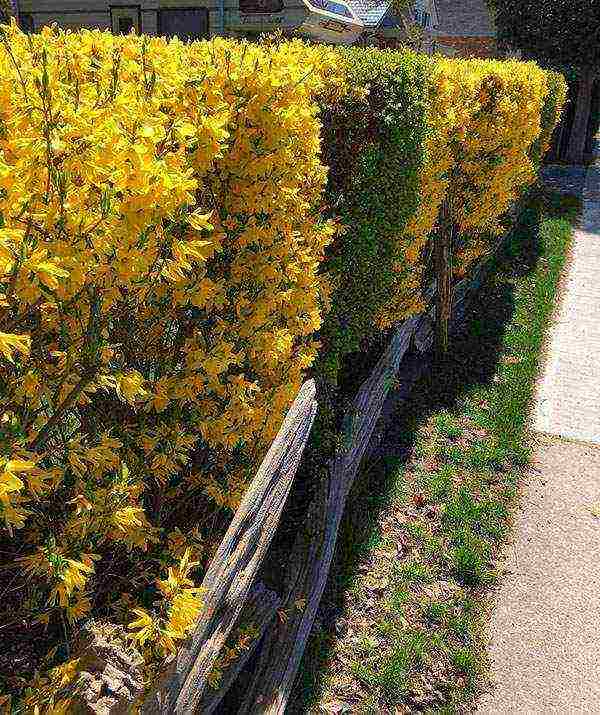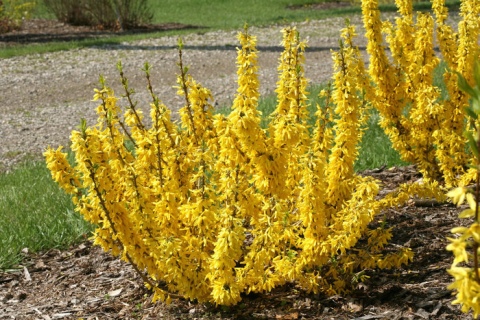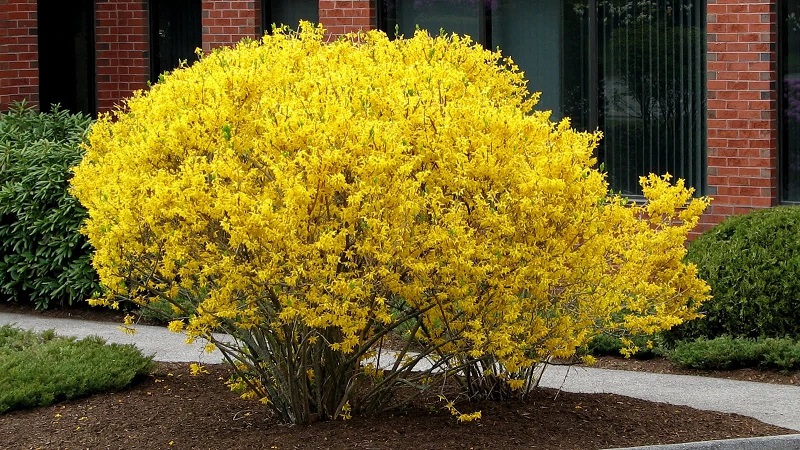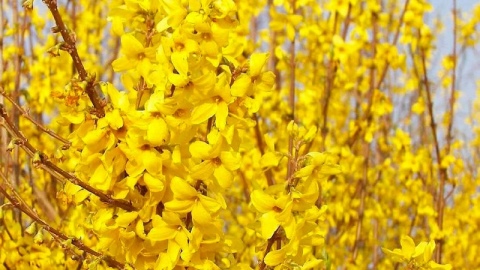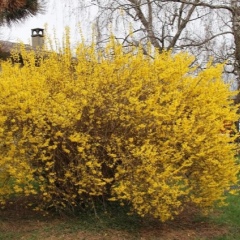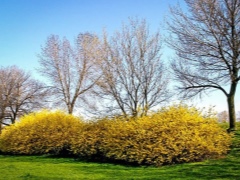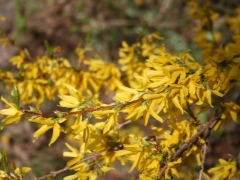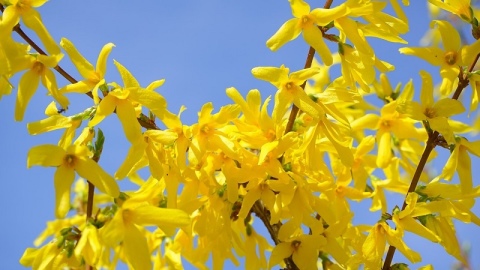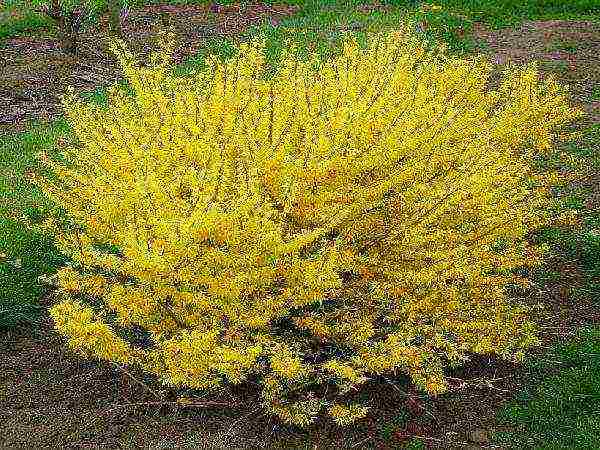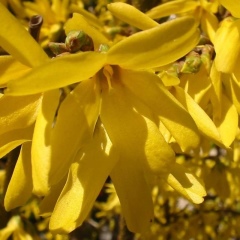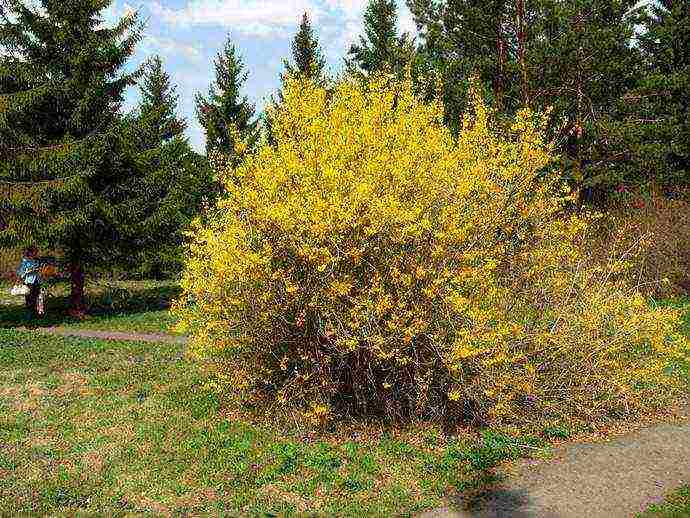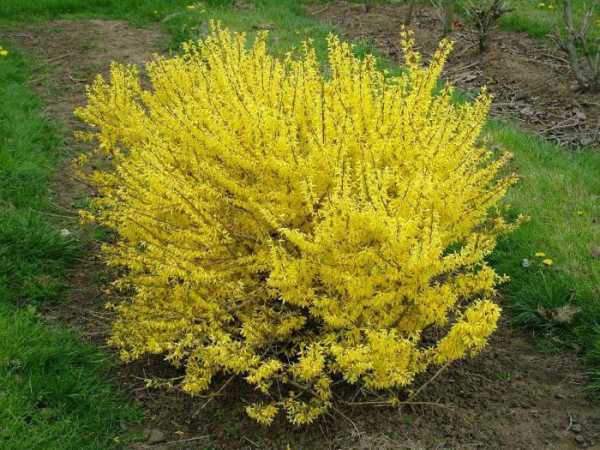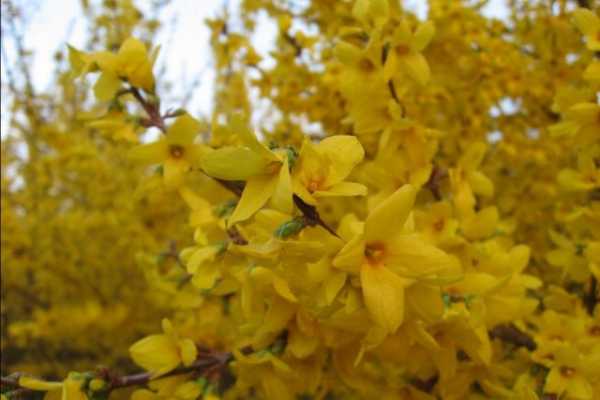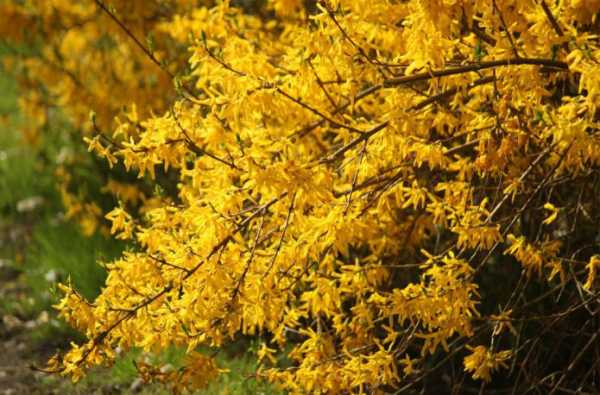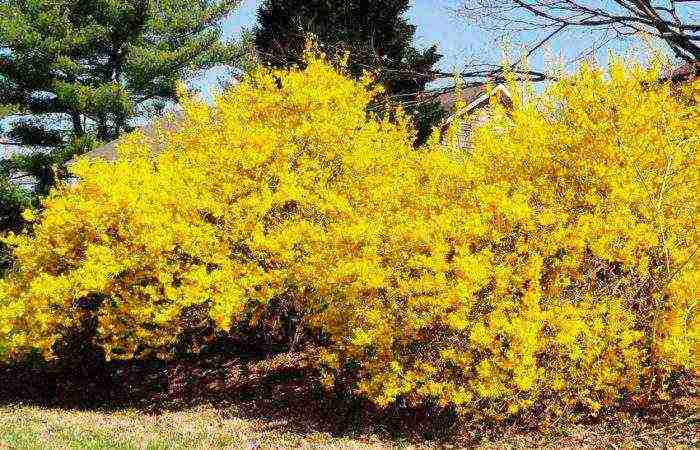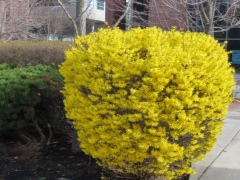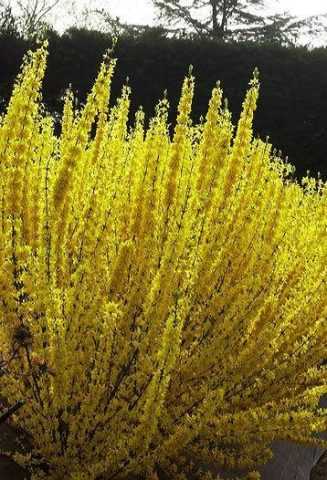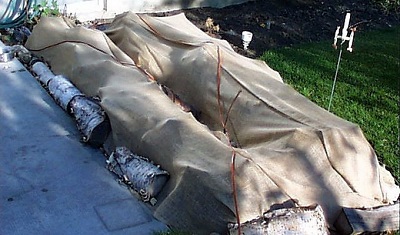Diseases and pests
Perennial is quite resistant to diseases and parasites, but sometimes bushes can be affected by diseases such as moniliosis, bacteriosis or wilting. When infected, you need to immediately take up treatment and not wait for the forsythia to dry out and die. The first disease is characterized by the formation of brownish spots on the leaf plates; if it is detected, all affected parts must be removed by cutting off in healthy places.
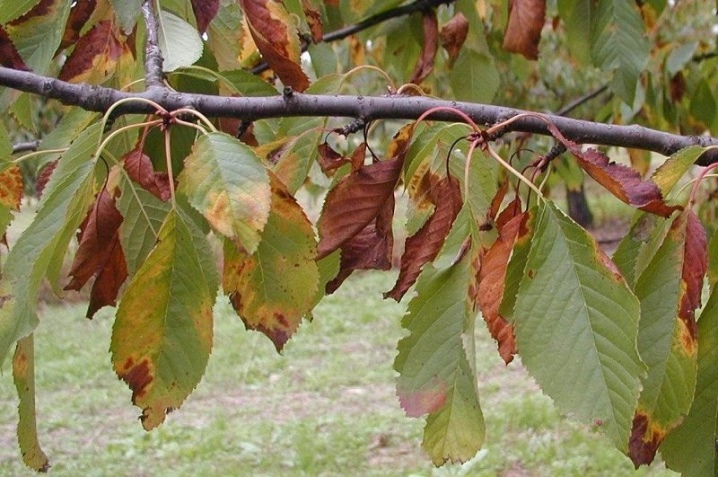
Bacteriosis is manifested by early yellowing of the leaf plates, followed by wilting of the entire bush. There is no cure for the disease, so the plant is completely dug up and burned outside the site.
When wilting, the shoots die during the flowering period, the disease is dangerous because it affects the vessels of the bush. As a treatment, the plant is treated with a solution of the drug "Vectra". First, it is applied to the trunks, and then to the shoots. In order for it to stick better to the branches, shabby laundry soap is added to the solution.
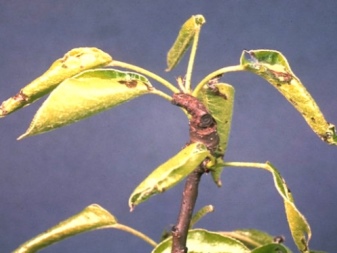
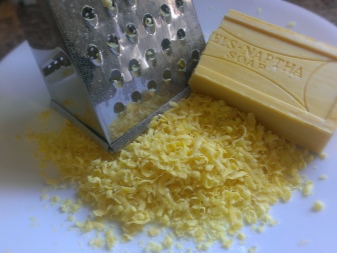
Forsythia can suffer from the appearance of nematodes on it, from their activity the leaf plates become discolored and curl up into a tube. The fight against them consists in treating the soil with the "Carbation" preparation; it is also possible to plant marigolds near the bushes, which negatively affect these parasites. Sometimes forsythia is attacked by aphids, they get rid of it with a strong soapy solution, which is sprayed on the plant, or with bitters from marigold or dandelions.
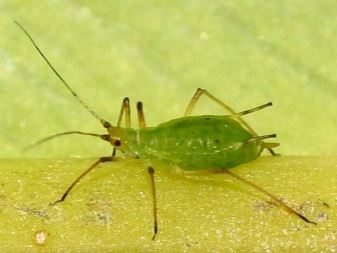

Planting and caring for Forsythia Linwood
Planting Linwood Gold forsythia, as well as the subsequent care of the shrub, includes the most basic procedures that even a novice gardener can do. Plants are planted both in spring and autumn. The most important thing when landing before winter is to be in time before the ground freezes. If you are late with planting, the seedlings will not be able to take root and, most likely, will die.
Preparation of the planting site and seedling
The quality and composition of the soil for growing Linwood Gold forsythia do not really matter. The main requirements for the soil for the optimal development of the shrub:
- moderate humidity;
- low or medium acidity;
- good breathability.
The groundwater level is not important, however, the variety does not like stagnant water.
Advice! If the soil in the garden is too acidic, it is recommended to dilute the soil. For this, a place for future plantings is dug up and fertilized with wood ash.
Planting forsythia Linwood
For the landing of Linwood Gold forsythia, they choose sunny places with good protection from strong winds. The variety develops well in partial shade, however, the lack of light affects the abundance of flowering.
Landing rules:
the depth of the planting pit must be at least 50 cm;
the recommended pit width is 50-60 cm;
for group plantings, it is important to maintain an interval between adjacent bushes of 1-1.5 m.
Planting procedure:
- A drainage layer of clay shards or broken brick is placed in the planting pit. The layer thickness is 15-20 cm.
- A layer of sand up to 10 cm thick is poured over the drainage.
- Then the pit is covered with a mixture of peat, sand and leafy earth. Mixing proportions: 1: 1: 2.
- Taking into account drainage, sand and soil mixture, the depth of the planting pit is reduced to 30-35 cm. The seedling is lowered into the hole and sprinkled with earth.
- The trunk circle is slightly pressed down for greater soil density under the bush.
- Planting ends with abundant watering forsythia.
Advice! If forsythia is planted in the fall, then the planting must be mulched with peat or sawdust.
Watering and feeding
Forsythia Linwood Gold does not need abundant watering. The bushes are watered once every 2-3 weeks.Water consumption per plant is 1-1.5 buckets.
If the weather is rainy, watering is stopped altogether, since with an excess of moisture, forsythia roots may rot. If the summer is hot, the volume of water for each bush can be slightly increased, but it is not recommended to fill the plantings.
The procedure is combined with loosening the near-stem section and weeding. For better moisture retention, you can sprinkle the soil with mulch.
Forsythia is fed 3 times a year:
- In early spring, the soil is fertilized with compost, which also serves as a mulch layer.
- In mid-April, mineral fertilizing is applied.
- With the end of flowering, the soil is fertilized with the drug "Kemir Universal".
Pruning
Young plantings are pruned for sanitary purposes - only damaged shoots are removed from plants, without touching healthy ones. Forsythia of the Linwood Gold variety aged 4 years and older, once every 3-4 years after such a procedure, they are pruned again, already in the summer. All shoots after flowering are cut in half. Old branches are completely cut off almost to the very base - they are usually left 5-8 cm above the soil level. This is done to rejuvenate the bush, as the result of such intensive pruning is active shoot formation.
If the forsythia grows too much to the sides and takes on an unkempt appearance, it is necessary to carry out the formation of the crown. For this, all outstanding shoots are shortened.
Important! Strong cutting of branches is fraught with cessation of flowering
Preparing for winter
Forsythia Linwood Gold is a fairly frost-resistant crop, however, young seedlings are somewhat weaker. They are not able to hibernate without insulation, especially in regions with cold winters.
Preparation for wintering involves covering the shrub with a thick layer of dry leaves. Before this, the shoots of the plant must be bent to the ground and fixed. Spruce branches are placed on top of the leaves.
With the onset of heat, the shelter is removed, since forsythia can resist.
Advice! In places where the winters are snowy, you don't need to cover the plantings. A thick layer of snow serves as a heater.
Landing features
Planting a perennial does not require too much effort, since forsythia belongs to unpretentious crops. When planting several bushes at once, you need to ensure that the distance between them is 1.5-2 m. You can plant seedlings both in autumn and in spring. The most appropriate time for autumn planting is September, and earlier in regions with more severe climates. A plant planted in spring has more time to form a root system, but this will result in poor flowering.
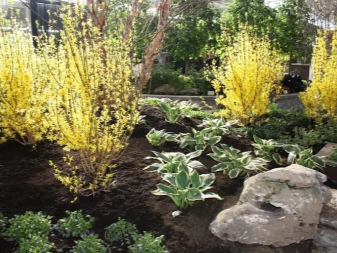
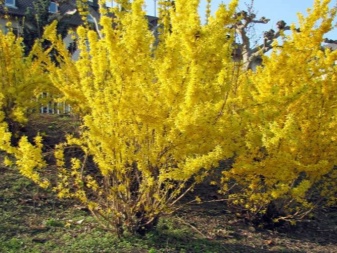
Landing takes place as follows:
- dig holes 0.5 m deep in advance;
- pour a layer of drainage 20 cm on the bottom and 10 cm of sand on top;
- it is worth adding humus and ash to the planting soil;
- carefully place the seedling in the pit, place the root collar above the soil;
- cover with earth, tamp and moisten;
- pour mulch from humus or fallen leaves on top;
- drive in a support not far from the plant to fix the bush to it.


We take into account the climate and choose a place
Not all varieties of forsythia are suitable for the same climatic conditions, this should be taken into account when choosing. For the southern regions, the Giralda forsythia, dark green, as well as intermediate and ovoid forsythia varieties are more suitable. For the middle lane, it is better to choose the European variety.
But in more northern regions, it is worth cultivating frost-resistant varieties of ovoid and intermediate varieties of forsythia. For the temperate climate of the Moscow region, European forsythia is more suitable, although with proper care it is possible to grow other species, but be sure to take into account their characteristic features.
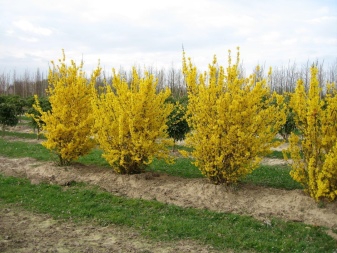
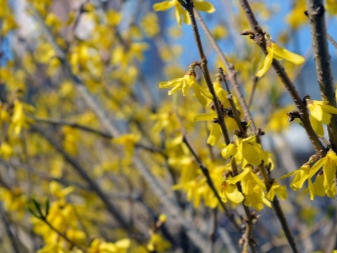
Beautifully flowering bushes become a real decoration of the garden, in addition, hedges of green coniferous trees favorably set off forsythia. In this regard, the shrub must be planted in a conspicuous place where it will look advantageous.
In addition, it should be borne in mind that the plant will still grow, and it needs a place for this, so it is worth placing the bush so that there is 1-2 m of free territory around. A place for planting should be chosen closed from the wind, but rather light, although the plant will grow well in partial shade.
Planting forsythia in open ground
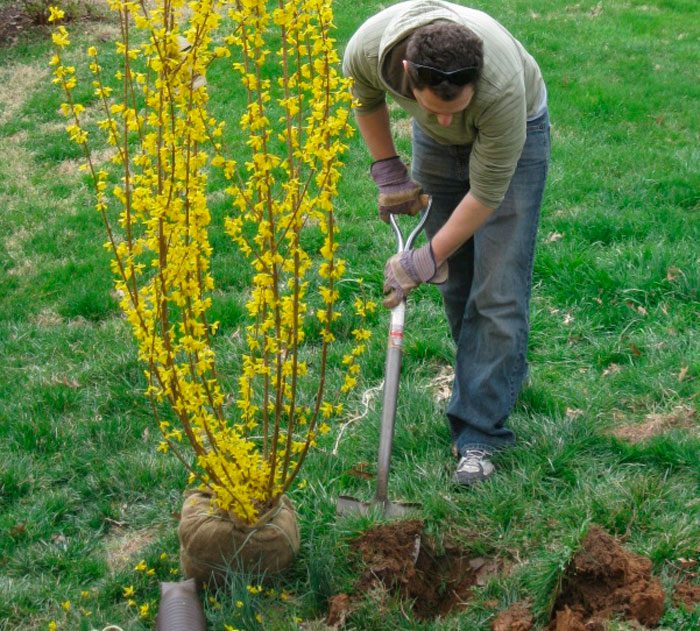
What time to plant
You can plant or transplant forsythia in spring or early autumn, before frosts will start because the plant must take root well before frosts start. This plant grows well in the shade, but it prefers a sunny area, which must be protected from gusts of wind. The quality of the soil is not important for this plant, however, it feels best in dry, slightly alkaline soil. In the event that the land on the site is acidic, then it is recommended to bring wood ash into it for digging.
Landing features
The planting pit should have a size of 50x50x60 centimeters, while the root system of the planted plant should be at a depth of 0.3 to 0.4 m.When planting several specimens at once, a distance of at least 150 centimeters should be maintained between them. At the bottom of the prepared planting pit, a drainage layer of crushed stone and broken brick should be laid, the thickness of which should be from 15 to 20 centimeters. From above it is covered with a layer of sand, the thickness of which should be 10 centimeters. After that, a soil mixture is poured into the pit, consisting of sand, leafy earth and peat, taken in a ratio of 1: 2: 1, to which 0.2 kg of wood ash must be added. Then the seedling must be placed in a prepared hole, which is filled with soil and well compacted. The planted forsythia must be watered abundantly. When planting in spring, the seedling will need to be looked after as an adult plant. If the planting was carried out in the fall, then no matter what kind of plant was planted, it will be necessary to cover the near-trunk circle with a layer of mulch. For the winter, the plant must be covered. In this case, the covering material should only be used that allows air to pass through so that the flower buds do not begin to rot during small thaws in winter.
Caring for forsythia: basic rules

Growing forsythia is a fairly simple task and is not much different from caring for other shrubs in the garden.
- Watering is required only in dry summers, its frequency is 1-2 times a month, 10-12 liters for each bush.
- Loosening the soil - to the depth of a shovel bayonet and weeding after watering, followed by mulching with dry earth or compost.
- Fertilization - three times a season. In early spring, humus is laid out near the trunk and then watered abundantly, in April, a complex mineral fertilizer is applied (60-70 g per 1 square meter), then after flowering it is recommended to pour with a solution of kemira-wagon.
- Young forsythia intermediate, like all other species, is subject to only sanitary pruning. Adult bushes are ennobled in the summer, after flowering. At the same time, old and dried branches are cut off, leaving a stump of 4-6 cm. This stimulates the formation of young shoots. If there is a need to rejuvenate an old bush, then cut off all branches at least 2/3 of the entire length. But such a measure can be applied no more than once every 3-4 years.

